Greetings Europa Barbarorum fans.
Today we are proud to present the faction, Mamla'ha biMassylim (The Kingdom of Massylia). Its been a long-time coming, but it is a faction that we couldn't leave out. A great enemy of the Qarthadastim, their nomadic beginnings will offer a very different game-style to other factions in that part of the world. Eventually, however, they will settle and develop their infantry - perhaps even, as in history, under the patronage of the Roman Republic.
The Qarthadastim Empire has a new enemy at its doorstep, and from the depths of North Africa they will come.
Faction Description
'We have dwelled in this land since long before the others came.The Caananites, whom the Greeks call Phoenicians, and the Greeks themselves. These people conquered our lands and settled where they wished leaving us just the arid desert, as if they owned the whole world. They call us treacherous and dishonourable, yet it is they who came here with tricks, who will switch alliances between our tribes whenever the balance of strength changes, and it is they who sell their daughters for our allegiance and hire us to protect their lands.
The Greeks say that we are the descendants of Persians, Indians, and Medes who followed Herakles to his demise in Iberia. They know nothing about us. We belong to this land. We roam freely and stay where we choose. For this we are called nomads, for this we are called Numidians.
And we, the tribe of the Massylii, are the strongest in our land. Though other tribes such as the Massaesylians seek to destroy us, they will fail. For we have grown in strength. Under the leadership of Ailyamus we have tested the strength of the Caananites and the Greeks. We have found our nation strong. We will unite the nomad tribes and rule the Gaetulians and Libyans, the Maures and Numidians. Then the world will quake at the sight of our strength and they will know . . .
. . . that we are the rightful rulers of this land.'
The image of the horse is taken from a coin minted by Micipsa, eldest legitimate son of Masinissa, King of Numidia. Numidians were widely praised for their horsemanship and cavalry in battle. They were strong allies to Rome and supplied many cavalry for the war against Qarthadastim. It is set on a leather background, a common material in Northern Africa. The blue and white colours set a strong tone for the faction.The name of this faction ‘Mamla'ha biMassylim' is Punic. Ancient Punic is related closely to ancient Hebrew as a Caananite Semitic language using an Aramaic script. As a result Punic was used as a guide for creating modern Hebrew, which allows us at EB to use modern Hebrew, with a few alterations, as a basis for our translations. Now anyone who knows Hebrew will notice that the preposition ‘bi' in front of Massylim appears to be out of place as it normally means something akin to ‘in, by, by means of'. However, in ancient Punic it appears to have been used to mean ‘of'. Thus ‘Mamla'ha biMassylim' means ‘Kingdom of Massylia'.
Nomad Camps
One of the problems we have with the nomadic factions, of which Mamla'ha biMassylim is one, is that on the campaign map (and indeed on the battlemap) one of their settlements will look exactly the same regardless of whether it is meant to represent a nomad camp or a more permanent, settled affair. In EBI this was never really a problem as not much attention was paid to campaign map settlement models, however in EBII this is certainly going to change. Each culture will receive their own settlement models in EBII; one model for each settlement size (from "village" to "huge city"). So how do we represent the difference in appearance between the transient camps of the nomadic tribes of northern africa and the great Phoenician cities of the coast, when both can be held by the same faction?Well, M2:TW did introduce just such a feature, that allows two types of settlement models for each culture - the City/Castle dichotomy! The new settlement type, castle, will now be used to represent nomad camps in provinces that were largely nomadic at our game's start. These nomad camps are, of course, static on the campaign map, so they cannot represent the moving tribal populations, but will instead represent a permanent meeting or trading area that played host a constantly transient population. Over time, as a province develops and the nomad camp grows in size, these meeting and trading areas will begin to be called home by a few people for longer periods of time (a semi-settled feature) so the nomad camp model on the campaign map will register these changes.
To fully settle a province, which will form part of the social reforms for several nomadic factions (including the Saka Rauka, Phalava, as well as Mamla'ha biMassylim), the nomad faction will have to "convert" the nomad camp to a permanent settlement. This will open up an entirely new set of building options and change the appearance of the settlement both on the campaign map and on the battle map, and represents the settling of the meeting or trading place with a permanent tribal population capable of an agricultural lifestyle. This "conversion" does not affect the whole province directly, and the population will largely still be nomadic. However by converting the nomad camp and settling a people able to establish agricultural infrastructure the province's population will begin to lose their old traditional nomadic customs and ways of life.
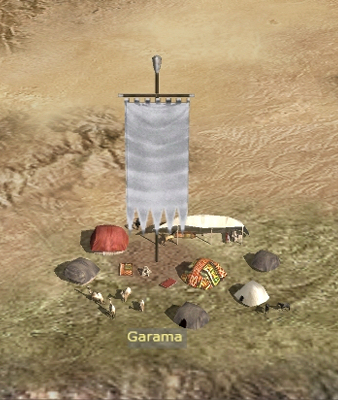
Ethnicities
Massylians__________________________
The strongest tribe of Numidia is also the ethnicity of the 'Royal court' that rule from Cirta and Zama even though most of the population of the kingdom is still nomadic. The ethnicity that makes up the starting rulers of the faction/tribe. Most likely to get all important traits of command and management, as well as being the most loyal.
Masaesylian_________________________
The other strong tribe of Numidia. The Numidians who rule from Siga under the new king Syphax are the ancient rivals of the Massylians, however they are Numidians and still will find their way into the royal family occassionally. They would be likely to get command traits and more likely to be unloyal.Puno-Numidian_______________________
The Numidians and Carthaginians had the custom of intermarriage. This practice was mostly done to get alliances and stronger ties between the Numidians and the Carthaginians. Most likely to get traits of command and management, as well as being loyal.Helleno-Numidian_____________________
In the later Numidian and Mauretanian kingdom, the Hellenes and specially those of the Ptolemaoi royal house started to enter the Numidian kingdom. The marriage between Juba II and Cleopatra Selene brought the mix of this two cultures to the Numidian princes. Most likely to get traits of command and management, as well as being loyal.Mauretanian_________________________
Occassional allies of the Massylians. The dark skinned peoples of the Mauretanii are well known, respected, yet still foreign in the royal court. The kingdoms of Numidia and Mauretania will join with the reign of Juba II. Will get command traits and sometimes will have a dubious loyalty.
Numo-Gaetulian______________________
The Gaetulians were well known in the ancient world as courageous and loyal people and those with Gaetulian ancestry were respected. Such ancestry was proudly admitted untill well into the second century A.D. More likely to recieve command traits and very loyal.Soldiers of North Africa
Mitnagsim Numidim
(Numidian Skirmishers) _____________________________________
Numidian javelinmen are fast moving skirmishers trained from infancy in the use of the javelin for hunting. They are recruited from amongst nomadic peoples who need their weapon skills to survive in harsh conditions.They are best employed to harry enemies and thin their ranks with volleys of missiles. They should avoid being sucked into hand-to-hand combat, as their knives are more useful in skinning animals than killing men; also, other than a small leather shield they have no armour. They wear simple loose tunics which are common across North West Africa at this time. Should they be caught in close combat or suffer heavy casualties they should not be expected to stand their ground and will likely attempt to disperse back into the countryside.
History: When it came to defending their country the Numidian kings relied on the terrain, overwhelming numbers, and the fleetness of their troops in withdrawing rather than any martial discipline such as the Romans pursued. As a result the majority of any Numidian army was composed of men more skilled as shepherds and husbandmen than in the art of war.
These men were easily routed and fared poorly whenever engaged in close quarters. However, they were extremely proficient skirmishers and their continued hit and run tactics, despite being infantry, were a nuisance only barely overcome by Metellus, Marius, Julius Caesar and many other respected commanders. While the Numidians showed their prowess on occasions such as these, their low morale was a severe weak point that turned the tide against them in many conflicts, especially under Syphax, king of Massaesylia, in the Second Punic War.
In describing the Numidian skirmishers Gaius Crispus Sallust, in his work ‘The Jugurthine War,' says, "with the exception of the royal cavalry, no Numidian attends the king after a route; they disperse to whatever quarter they severally feel inclined, and this is not esteemed a military offense, but is the custom of the country."
Qasatim Numidim
(Numidian Archers) _____________________________________
Since the earliest times the Numidian people have fought from a distance. They ruled over the sands and mountains with sling, javelin and simple bows. When the Phoenicians came they pushed many of the nomads further into the harsh interior. The nomads soon adapted to the weapons of these outsiders and became acquainted with the composite bow.Wearing no cowardly armour these archers with their Canaanite bows deliver death from afar, sending heavy arrows tearing through the ranks of the enemy. With a hat-helm protecting them from the harshness of the sun, they can deliver volley after volley of indirect fire. When the enemy is routed they descend upon them like ravenous jackals, and bash their heads in with their cudgels. If attacked up close they can give a good enough account of themselves as their weapons will tackle all but the most heavily armoured infantry. Yet this is a waste of good archers. Use these men wisely, general, and remember that they can win battles if employed properly. Being a people with a strong tradition in hunting they carry daggers as well but these are not intended to be weapons. They wear simple loose tunics which are common across North West Africa at this time.
History: Historically, the Numidian peoples lacked all but the simple bow until the arrival of Phoenicians at the end of the Bronze Age. Though it took some time, Numidians began to take up the bow with tremendous vigor. Soon, Carthage itself was replacing Phoenician archers with Numidian, and sending the former to become Marines in her great navy. Numidian archers operated at the battle of Zama during the Second Punic War. Numidian archers were battle winners for the Romans as well, giving extremely good accounts of themselves under Caesar and against the Celts and Germans who resisted the onslaught of Rome.
Qala'im Afrikanim
(African Slingers) _____________________________________
African slingers come from the shepherd nomads who used their slings to protect their herds from predators and from the Libyan farming communities nearer the coast. They're quite skilled with their slings, which truly is a deceptively simple weapon. One end of the sling is looped around his wrist while the other is released when the stone is launched. A sling bullet would not be seen in flight and was capable of shattering a shield or penetrating unarmored flesh to a range of about 100 metres when slung by a skilled man.African slingers are best used as light skirmishers. With no armor, a thin leather shield, and simple daggers, they rush forward toward the enemy to pepper them with terracotta shot, only to flee when threatened. For clothing they wear simple loose tunics which are common across North West Africa at this time.
History: Historically, slingers seem to have been used in almost all corners of the world in some form and North Africa was no exception. Hand slings are very easy and cheap to make, and yet they are a respectable weapon. They generally consisted of a single long strip of leather or woven wool, with a central "pocket" for the stone. The longer the sling, the greater its range.
While some reference is made to the Numidians using slingers on occasion, the greater evidence for the existence of large numbers of slingers in Northwest Africa comes from the remains of Carthaginian border forts called limes or fossa by the Romans. The Carthaginian forts could have housed as many as fifty men and finds recovered from them include terracotta slingshot and catapult ammunition.
Dorkim Numidim
(Numidian Infantry) _____________________________________
Numidian infantry may not be as reliable as the heavy infantry of other countries but it will do. These men are the picked foot soldiers from among the many levies of the hills and valleys of Numidia. These men have some experience in combat and have been equipped and trained with better armaments using large leather thureos shields, swords and throwing spears. They wear tall conical helms characteristic of Numidia and simple loose tunics which are common across North West Africa at this time.History: Historically the Numidians relied on the terrain, overwhelming numbers, and the fleetness of their troops in withdrawing rather than any martial discipline such as the Romans pursued. As a result the majority of any Numidian army was composed of men more skilled as shepherds and husbandmen than in the art of war. These men were easily routed and of little use in pitched battle. The Numidian kings recognized this fact and would later attempt to rectify it with a rigorous training program built under the Roman design.
However, in the days before the evolution of Roman styles in Numidia the kings would select the most experienced and veteran soldiers of their army, many of whom likely came from the settlements as opposed to the open country, and used them as a heavier pinning force to hold the enemy while their cavalry and skirmishers either got behind them or ambushed them from a prepared location.
Numidian infantry were decent enough infantry but were rarely given the ability to give a good account of themselves. In the army of Syhax of Massaesylia they were defeated before the battle began when their camp burned down. In the Jugurthine war they were simply outmatched by their Roman opponents. The only time when they gave a particularly good account of themselves was during the battle of Zama at the close of the Second Punic War. The Numidian infantry formed the right wing of Scipio's infantry line and performed just as well as the Roman troops in pushing back the Carthaginian line and holding them long enough for the Roman and Numidian cavalry to get behind them.
Parasim Numidim
(Numidian Cavalry) _____________________________________
Numidia produces some of the finest cavalry in all Africa, if not the Western Mediterranean world. Armed with javelins, these mounted skirmishers can be a nightmare for an opponent as it can prove practically impossible to pin them down in combat. Their tactics are to pelt the enemy with deadly volleys of javelins, and then swiftly retreat when charged. If the enemy stand, they are slaughtered with volleys of javelins, and if they run the Numidian cavalry can ride them down!Instinctive riders, the Numidians are famed for not using a saddle or reins, using only a stick to direct their horses. Nevertheless, they maneuver with the "grace of a flock of birds". Having adapted to the broken expanses of their homelands, Numidian cavalry have great stamina, and they are also experts in their form of the Cantabrian circle attack.
The Numidian cavalry carries large leather and wicker shields which cover their bodies. Should their supply of javelins run low they will retain one for use in close quarters. Such a light weapon is not intended for close quarters, however, and such should be avoided except in the most dire of circumstances. For clothing they wear simple loose tunics which are common across North West Africa at this time.
History: Like their foot brethren the Numidian cavalry were not composed of trained soldiers like the Roman and Hellenic armies but more so shepherds, husbandmen, farmers and the like. As a result these men were easily routed and fared poorly whenever engaged in close quarters. However, they were extremely proficient skirmishers and their continued hit and run tactics and skill as riders resulted in overcoming much better armed, armored, and trained soldiers.
While the fleetness of the Numidians was primarily a trait designed to aid them in retreating when necessary from combat, it also made them excellent cavalry for chasing down fleeing opponents and capable of quickly crossing the battlefield to render aid where necessary. The generals who recognized and properly utilized these skills became famous and in turn made the Numidian cavalry famous. Numidian cavalry were present in almost every engagement of the Second Punic War and many of the First as well as ensuring Roman dominance in the Third. Numidian cavalry continued to serve as reliable Roman auxiliaries well into the Roman Empire serving as far away as Dacia under the Emperor Trajan, appearing on his renowned column.
Gldgmtk (Numidian Noble Cavalry) __Early Era____________________________
__Middle Era___________________________
__Late Era_____________________________
The Numidian Nobles are the high ranking class of Numidia. Trained in the hit and run tactics of their lower caste comrades they also wield heavier equipment and armour. These heavier cavalry are capable bodyguards and can be effective on the charge but they are not on the same class as the heavy cavalry of other lands. Their greatest use lies in their speed, maneuverability, and accuracy with their javelins.Should they be forced to charge they will draw their straight longswords of the Taureg design. The nobles of the nomadic era wear animal hides for defense and carry shields of leather like their poorer cavalry brethren, they wear helmets of moslty Numidian and Punic design with some Greek influence. The Nobles of the tribal era, when Numidia became more heavily influenced by Greek and Phoenician styles and the populace became more semi-nomadic, use tube and yoke corselets of leather and linen as well as scale mail armour and use bronze circular shields, they wear mostly Hellenic influenced helms. Eventually Numidia became increasingly settled and agricultural and adopted armour, tactics and styles from not only Greece but also Italy, Spain and Gaul. The Nobles of that era use heavy mail armour and carry bronze and iron shields as well as using helms influenced by Roman designs in addition to Hellenic helms and the traditional Numidian pointed helm.
History: Historically, in Numidia there was a class of nobles that ruled under the chiefs and kings and later under the sole king of Numidia. These nobles existed in both parts of Numidia, Numidia as it is known today which was dominated by the Massylians, and further north west where the area was dominated by the Masaesylian Numidians. These nobles often acted as the bodyguards and royal soldiers of the king, particularly under the reign of Jugurtha. In Sallust's account of the Jugurthine war he mentions that in a route, only the Royal Cavalry could be counted upon to remain at the King's side and not disperse into the countryside. The term GLDGMTK used here is from the Libyan dialect spoken by the Numidians and comes from several noble titles on inscriptions from the town of Thugga. The title translates loosely as 'Prefect of Fifty'. The other common title in Thugga was 'Chief of One Hundred'.
The higher class of cavalry in ancient Numidia evolved with the changing times from their earlier nomadic lifestyle to their settled existence where they became heavily influenced by Phoenician, Greek and Roman styles. In their earlier days they were likely equipped in the same manner as Massaesylian and Mauretanian cavalry with animal hides acting as their armour. In later ages panoplies of linothorax armour and bronze scales are found in Numidia. By the fall of Carthage the Numidian kings are depicted wearing chain mail and this increasing move toward heavier elite cavalry may be what caused the Numidian Nobles to be replaced as bodyguards by Spanish and Gallic mercenary cavalry. Later than this the Romans record Juba II using a form of cavalry which they describe as being very similar to the professional bodyguards of Augustus and the early Emperors. Whether this is a similarity due to both using European cavalry such as Gauls, Iberians and Germans, or whether this was a move back to native cavalry using arms inspired by foreign styles is unclear.
History of Massylia
The earliest myths regarding the nomadic tribes we today call berbers come from the greeks. they claimed that when Herakles died in Spain and his army dispersed the Persians, Medians, and Indians crossed over to Africa. there they began conquering the indigenous tribes of gaetulians and Libyans. the Medians became the Maures, or Mauretanians in western Morocco and the Persians, or Indians depending on the versian, became the nomads, or Numidians.The name 'Numidian' means nomad as the Numidians were a semi-nomadic people dwelling in modern Algeria, Tunisia, and parts of eastern Morocco.
The Earliest known ruler of the Numidians was a man named Ailymas, or Alyamus, who appears in the account by Diodorus Siculus of Agathocles' invasion of North Africa. though the text refers to all native North Africans as Libyans, Ailymas is described as coming from the area we identify as Numidia.
It is commonly hypothesized that Ailymas ruled the Numidian town of Thugga, modern Dougga, and was the ancestor of Zelalsen, who is the gradfather of the well known Massinissa.
The Massylian tribe began rising to dominance under Gala, son of Zelalsen, who followed his father's conquests capturing the later capital of Cirta and even attacking Carthaginian territory. By the second Punic war, however, Gala had allied with Carthage and sent his eldest son, Massinissa, to aid carthage in Spain. While Massinissa was away Gala died from old age and his brother Oezalces came to the throne. He soon passed on as well and the throne came to his eldest son who was older than Massinissa. A distant relative named Meztule disagreed with this arangement and defeated and killed the new king, placing his younger brother Lacumaze on the throne. As Lacumaze was younger than Massinissa this went against the royal tradition.
At this time Massinissa had recently been captured and won over by Scipio, later Africanus, and returned home via Mauretania to settle his succession. After defeating Meztule and Lacumaze in battle Massinissa showed mercy and let them live. Carthage was soon defeated and Massinissa's territory expanded drastically.
Nearing the end of his reign Massinissa began to put pressure on Carthage, forcing them into confrontation. Rome took this as occasion to declare war on Carthage. Shortly afterwards Massinissa died at over 90 years of age leaving the kingdom to his three eldest sons. Two died from disease leaving the kingdom ruled solely by Micipsa.
When Micipsa died he left the kingdom to his two sons and his adopted nephew Jugurtha. tempted by promises of wealth, and believing his cousins to be plotting against him, jugurtha murdered his brothers. Though he bought off Rome for a time the Senate eventually could not stand his actions and defeated him in the war that made Gaius Marius famous.
After Jugurtha was delivered to Rome his brother was left in control of Numidia and the nation remained peaceful until the reign of Juba I aside from a minor coup against Hiempsal II which ultimately failed. During the reign of Juba I the civil war between Caesar and Pompey occured. Juba chose the side of Pompey and was eventually defeated by Caesar. His son, Juba II, was raised in Rome and married to Cleopatra Selene, daughter of Mark Anthony and Cleopatra VII, before being reinstated to the throne of Numidia. Juba II contended with the revolt of Tacfarinas during his reign as well as general resentment of his Romanization from the populace. As a result Juba moved his capital to Caesarea and changed his title to king of Mauretania. Juba II was a scholar king who wrote many books, including a history of carthage, spoke Punic, Numidian, Latin and greek, and was the first to explore the Canary islands fully. Unfortunately, like so many ancient authors, none of his works have survived.
His son Ptolemy of Mauretania ruled after him until 40 AD when his cousin, the Emperor Caligula, ordered him assassinated and annexed the kingdom. After Ptolemy's death his servant Aedemonus lead a revolt against Caligula but was defeated.
Though descendants of the Massylian line continued to live on in different Mediterranean provinces, the kingdom of Numidia was no more.
We hope you have enjoyed this preview of some of the new faction and units.
Please note that unless stated otherwise, ALL pictures, names, and descriptions shown in our previews are works in progress. We continue to improve on all parts of EB, and we will continue to do so long after our initial release.
Since some areas where these news items are posted cannot handle wide images, we appreciate your restraint from quoting full-size images.
As always, if you have questions or comments, the best place to post them is here, where the EB team is most active:
Europa Barbarorum ORG forum
Europa Barbarorum TWC forumWe give special thanks to Image Shack that provides us with a simple, foolproof, and free way to show you all these pictures each week.
Have a great day!
Regards,
The Europa Barbarorum team.Here are a couple of signature banners for fans. The traditional one and one featuring Caratacos' Numidian Nobles:


Preview - Mamla'ha biMassylim
Preview of a new faction, Mamla'ha biMassylim! (The Kingdom of Massylia)
Posted by XSamatan on


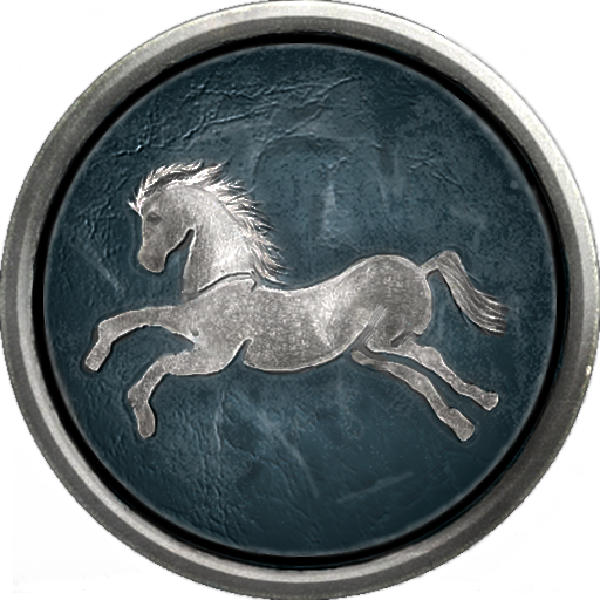
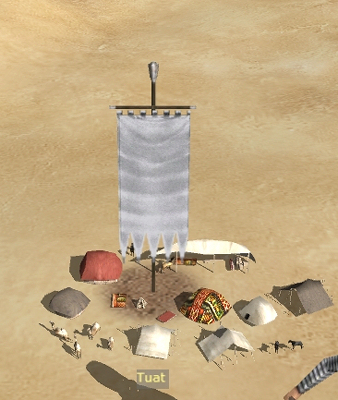
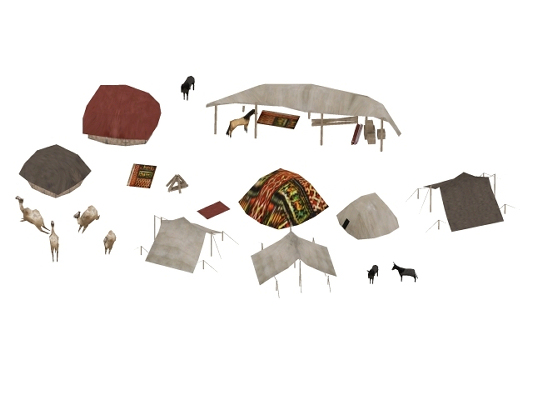

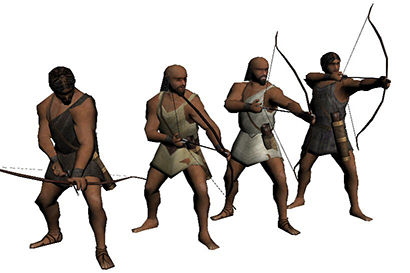

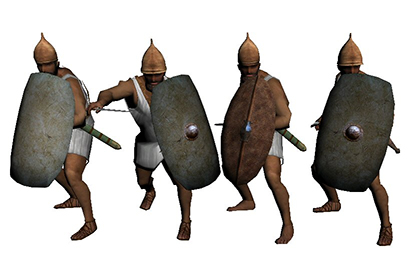
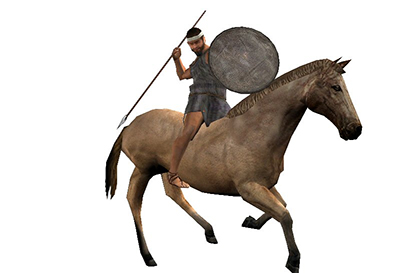

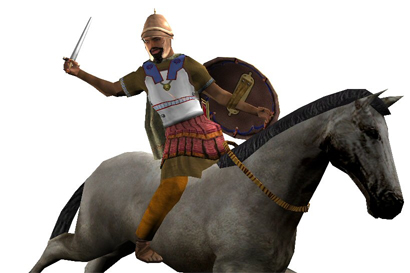
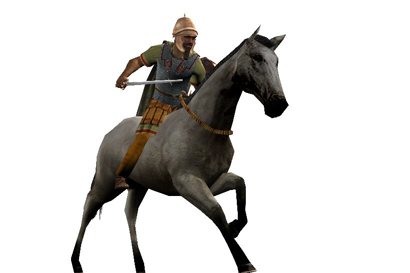
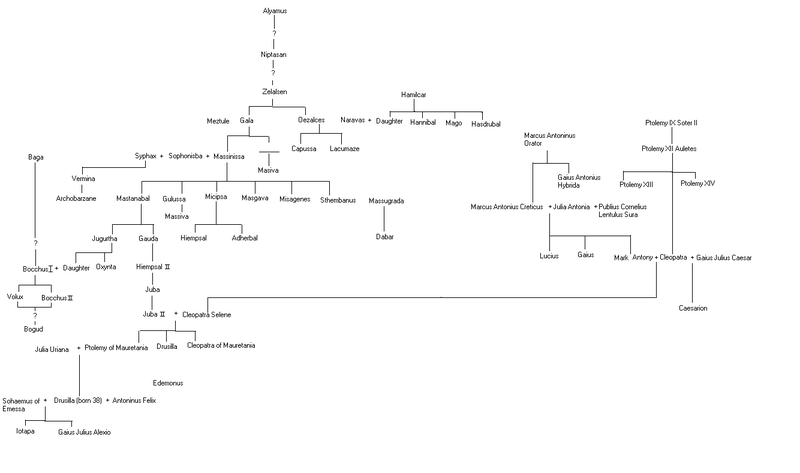



Source:
Forums.totalwar.org
Don't forget to see the video:
Moddb.com